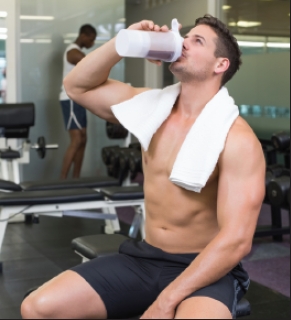To achieve a fit and muscular physique, the average person—your customer—does not have to train like Arnold Schwarzenegger did in his prime. After coming to America from Austria as a teenager, he won Mr. Olympia at the age of 20, becoming the youngest man to do so.
The problem with his accomplishment was that it was not natural. While Schwarzenegger put in countless days and hours in the gym, he was also aided by performance-enhancing steroids, a claim that Arnold admitted he does not regret (1).
Does building muscles mean you have to use steroids? No. This is one of the many myths surrounding sports nutrition.
The reality is that there are many safe, natural and nutritional products available to support everyone from daily joggers to weekend warriors to those that want to bulk up. What follows is a rundown of a few common myths about sports nutrition, and the facts and research to disprove them.
Myth 1: Sports Supplements Are Not Safe.
Nearly every major media outlet has run pieces suggesting sports supplements are unsafe. Perhaps the most recent high-profile story was HBO’s May 20 airing of Real Sports with Bryant Gumbel, which characterized sports supplements as dangerous and unregulated. The messages are having an impact on consumers.
The myth that sports supplements are dangerous is one most people either believe or do not. On the 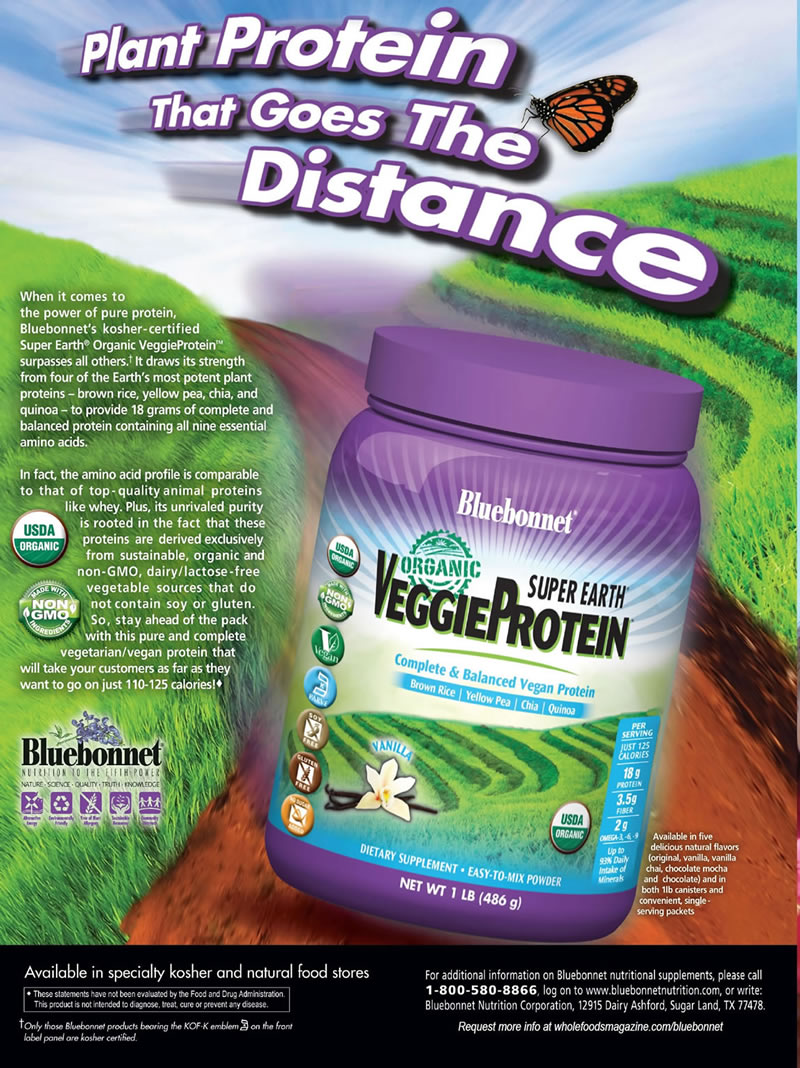 surface, there does not seem to be much room for a middle ground on this issue. But actually, there is, and defining it is important for natural products retailers.
surface, there does not seem to be much room for a middle ground on this issue. But actually, there is, and defining it is important for natural products retailers.
The reality is some fly-by-night companies make unattainable promises and may formulate with illegal ingredients. Says Trisha Sugarek MacDonald, B.S., M.S., senior director of research and development and national educator for Bluebonnet Nutrition, Sugar Land, TX, “Yes, there are dangers in the sports nutrition category,” citing anabolic steroids and DMAA as examples.
Since 2008, the U.S. Food and Drug Administration (FDA) has identified more than 300 illegal products masquerading as supplements that contain hidden drugs, questionable stimulants and other undeclared substances, according to Sugarek MacDonald. Some of these items included steroid-spiked sports nutrition products that could cause liver injury, heart attack and stroke (2). In late 2014, Congress passed the Designer Anabolic Steroid Control Act (DASCA), which gives the Drug Enforcement Agency new tools to take aim at these unscrupulous companies. But, it will take some time to see all these products disappear from the marketplace (especially through e-tailers).
“Some products do have potentially unsafe ingredients, so caution should be taken, and athletes should do their research to make sure the supplement being used is right for them,” says John Urban, sports category brand manager at NOW Foods, Bloomingdale, IL.
The good news, and the news to share with shoppers, is that these companies are on the fringe of the supplements industry. Legitimate companies comply with the law, and formulate with vitamins, minerals, herbs, amino acids, protein and other health-promoting ingredients.
“Well, protein powder is 40% of the sports nutrition market, tough to make the claim that protein powder is unsafe,” states Tom Richardson, chief executive officer of Top Secret Nutrition, Miramar, FL. Richardson also mentions branched chain amino acids, or BCAAs, stating that there is nothing unsafe about the building blocks of muscle.
For example, regular supplementation with BCAAs can aid in reducing muscle soreness and inflammation during and after physical activity (3). In one study, 12 distance runners participated in a double-blind crossover study over the course of two three-day training sessions. The participants who consumed beverages containing BCAAs recorded much lower muscle soreness and fatigue after training that those who consumed a placebo (3).
Urban believes that BCAAs are “a clean and natural sports product that can help every athlete” because they “are free of stimulants and other potentially unsafe ingredients.”
 So, how can shoppers tell the good from the bad? Clean labels are a start. “Consumer skepticism and safety concerns go hand in hand with the daunting ingredients list on sports nutrition products that are often lengthy and widely unknown,” says Jackson Zapp, vice president of innovation at Applied Food Sciences, Inc., Austin, TX.
So, how can shoppers tell the good from the bad? Clean labels are a start. “Consumer skepticism and safety concerns go hand in hand with the daunting ingredients list on sports nutrition products that are often lengthy and widely unknown,” says Jackson Zapp, vice president of innovation at Applied Food Sciences, Inc., Austin, TX.
You can advise shoppers to look for certifications like NSF’s Certified for Sport seal, which certifies that the products have met the group’s high standards for ensuring ingredients are not adulterated, banned from sports or do not appear in the amounts appearing on labels. According to the company’s website, “This specially designed NSF program is a focused solution designed to minimize the risk that a dietary supplement or sports nutrition product contains banned substances.”
Also, choose products made by responsible manufacturers that fully test for adulteration, contamination and ingredient substitution. Retailers can also check with manufacturers about the latest research behind supplement ingredients supporting their safety and efficacy. According to Matthew Titlow, chief executive officer of Compound Solutions Inc., Carlsbad, CA, the idea that sports supplements could be unsafe is an idea that started in the early 1990s. “Sports nutrition is many, many years past this idea,” he states.
This idea is seconded by Elyse Lovett, MBA, MS, marketing manager at Kyowa Hakko USA, New York, NY, who believes that sports nutrition “could be extremely beneficial for athletes, especially those ingredients and formulations that are well researched and backed by science.”
A big concept that shoppers need to be aware of, according to Dallas Clouatre, Ph.D., consultant for research and development at Jarrow Formulas, Los Angeles, CA, is that “there is no one-size-fits-all in supplementation.” And, consumers should check with a physician before beginning or altering a supplements regimen.
Different supplements aid in supporting an athlete’s health in different ways, and this varies from person to person. But one fact is certain: most exercise enthusiasts can benefit from balanced supplementation with safe products.
“Without proper nutrition and supplementation over time, our bodies would be unable to recover and would exist in a state of depletion, increasing the risk of injury and disease,” says Timothy Mount, CN, CCHA, director of education for NeoCell Corporation, Irvine, CA.
Myth 2: All Proteins Are the Same.
Shoppers may feel one protein is as good as another. But, according to Tim Marr, sales director at Nutrex Hawaii, Kailua-Kona, HI, “Studies have shown that not all proteins are equal.”
Urban breaks it down: “Some offer more complete amino acid ratios than others with higher amino acid content, but ultimately, it is the choice of the athlete.”
Clouatre, among others, believes that whey protein is the “king of the muscle building proteins” because of its high content of l-leucine, a BCAA that can induce muscle synthesis.
Whey protein is the mixture of nine essential amino acids and studies have shown possible health 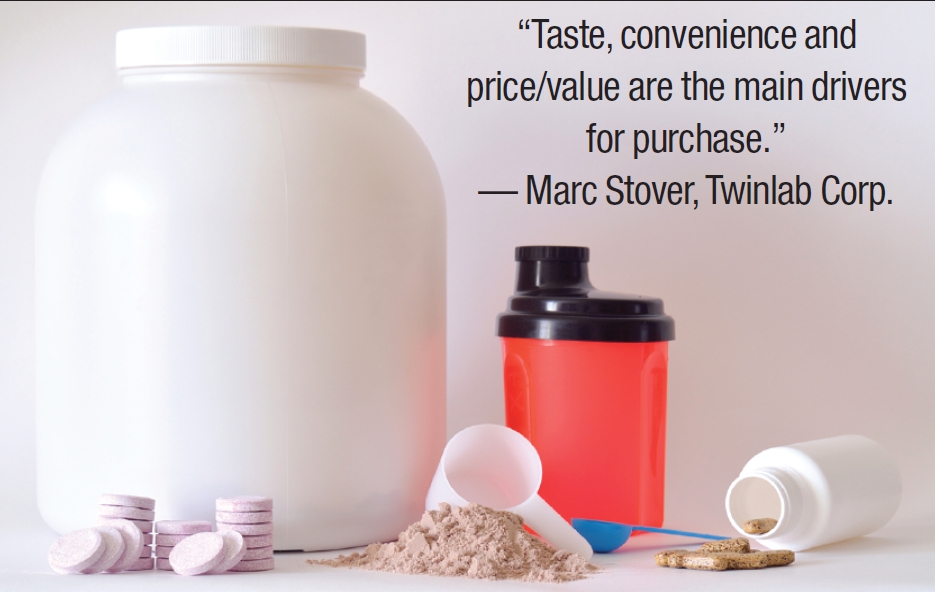 benefits such as supporting healthy weight management as well as maintaining cholesterol and blood pressure in a normal range (4). In athletes, taking whey protein during resistance training helps promote the growth of lean tissue mass (4).
benefits such as supporting healthy weight management as well as maintaining cholesterol and blood pressure in a normal range (4). In athletes, taking whey protein during resistance training helps promote the growth of lean tissue mass (4).
Whey protein is said to be the protein of choice for those looking to build muscle mass with a more toned look, according to Sugarek MacDonald. “The amino acids derived from whey are typically associated with protein synthesis and oxidation…so it is great for muscle building, but not repair.”
Derek Dearwater, president of Naturade, Irvine, CA, agrees that whey protein’s advantages over different types of proteins are its fast digestion and absorption. He states that, after a single serving of whey protein, it only takes 40 minutes for the blood level of amino acids to reach its peak and about an hour for the level to return back to normal in most people.
“This is amazingly fast in comparison to its counterparts casein, plant-based proteins or even whole foods,” says Dearwater.
 In addition to muscle synthesis, digestion plays a big part for shoppers when deciding which protein to purchase. According to Elizabeth Poon, director of marketing, nutritional brands, at Country Life Vitamins, Hauppauge, NY, whey protein is also “one of the easiest forms of protein to digest.” While it is arguably the most popular type of protein, she suggests that anyone trying to avoid lactose should consider an ultra-filtered or micro-filtered whey isolate protein because it is 99% lactose free.
In addition to muscle synthesis, digestion plays a big part for shoppers when deciding which protein to purchase. According to Elizabeth Poon, director of marketing, nutritional brands, at Country Life Vitamins, Hauppauge, NY, whey protein is also “one of the easiest forms of protein to digest.” While it is arguably the most popular type of protein, she suggests that anyone trying to avoid lactose should consider an ultra-filtered or micro-filtered whey isolate protein because it is 99% lactose free.
Marr argues that plant-based proteins should be an option because the “body absorbs it the best, much better than whey, because it recognizes it as food.”
Emma Andrews, RHN, NPDP, national educator for Vega Nutrition, Burnaby, BC, Canada, states, “If an athlete is at all sensitive to whey or casein proteins or their digestive tract is compromised, the absorption and utilization of amino acids will be impaired.”
When it comes to other proteins, including plant-based proteins such as pea, hemp, chia, rice, soy and others, Dearwater says they “have the advantage of being easier to digest for those people that may have a dairy allergy such as lactose intolerance, which affects over 50 million Americans.”
But, plant-based proteins provide more benefits than just being easier to digest. Says Sugarek MacDonald, “According to research, when supplemented, vegetable protein was found to help improve immune function, support a healthy weight and lean body mass, and aid in maintaining healthy blood pressure, cholesterol and glucose levels that are already within the normal range.”
Shoppers must also consider the amount of amino acids the protein they select contains. According to Poon, even though they provide fiber and essential fatty acids that are not found in whey protein, “plant-based proteins don’t provide complete amino acids on their own.”
But, there are some exceptions. Marc Stover, vice president of sports nutrition for Twinlab Corporation, New York, NY, feels that “vegan customers need to be aware that single vegan sources of protein may not be complete, however, and so should choose blends that take the care to provide a full spectrum of amino acids.”
In addition to whey and plant-based proteins, many companies use new sources of protein in products. For example, Scarlett Blandon, MS, RDN, head of research and nutrition scientist for Axiom Foods Inc., Los Angeles, CA, refers to the impact of rice protein.
She says that “leucine, the key amino acid that triggers muscle development, absorbs faster in rice protein than whey,” and rice protein provides athletes “the only 90% isolate with the highest amount of protein available.” Some brands are also very low carb.
One study has shown that rice protein and whey protein aid in exercise performance equally (5).
Mixing proteins is an option, too. Clouatre believes “a mixture of proteins with different rates of digestion and assimilation is superior to single protein sources.”
Myth 3: More Protein Intake Is Better To Build Muscle.
Now that customers are aware that the type of protein makes a difference, should they purchase 10 tubs of their favorite protein, and return for more in a week?
Not advisable, but shoppers should definitely understand when to use protein, and how much to take. As for when, Clouatre notes, “Protein are aimed mostly at recovery and super-compensation.”
But, according to Blandon, “in all stages, there are benefits to adding protein…The more you workout, the larger number of grams of protein a body needs daily.”
Blandon states that the International Society of Sports Nutrition (ISSN) says athletes consume 1.4–2.0 g/kg of their body weight per day in protein (6). Then, Blandon adds that the American College of Sports Medicine (ACSM) “recommends ingesting some protein with a meal before a workout, but does not specify the amount.”
Additionally, Corbin Hohl, research scientist for Glanbia Nutirtionals Ingredient Technologies, Fitchburg, WI, states that people who live a more active lifestyle need to consume a higher amount of protein, approximately 1.5-2.2 g/kg of body weight (22).
While different research and experts will recommend different amounts of protein that should be taken after a workout, the numbers are usually in the same general area.
Urban states that the human body can digest “approximately 25 g of protein every 2–3 hours.” Because of this, he recommends that an individual take roughly 25 g of protein in any one serving.
Similarly, Titlow says that for the best results, people should take around 20 g. “You need enough protein to equal at least two grams of leucine. That typically means a minimum of 15 g of pure whey isolate.”
But, what about the athletes and bodybuilders that consume more than the recommended amount of protein?
When it comes to those that consume 2–3 g/kg of body weight each day, says Sugarek MacDonald, “there is no evidence that these intakes enhance the response to training or increase the gains in muscle mass or strength. Excess protein can deprive the athlete of more efficient fuel and can lead to dehydration.”
Interestingly enough, Hohl cites research that claims that "spreading protein consumption throughout the day can have a postiive effect on health and lean muscle growth, in comparison to a large portion of dietary protein consumed late in the day in one sitting (23)."
Myth 4: Protein Delivery Methods Are All The Same.
Your customers now know which type of protein and how much protein they should invest in. Now, it is necessary to establish if the delivery method of said protein also makes a difference.
necessary to establish if the delivery method of said protein also makes a difference.
Hohl says that each individual needs to decide on a delivery method that "is best suited to their preferences, goals and lifetyle."
“Taste, convenience and price/value are the main drivers for purchase,” says Stover. He also believes the decision about which protein form is best is partly psychological. He states, “Some perceive a large tub of protein to be solely for ‘bodybuilders’ and view protein bars as more of a healthy snack or meal replacement.”
Marr believes bars tend to contain more wasted calories than other delivery options. He adds, “If someone does prefer a bar, they should choose one that has more protein than sugar and look for a clean formula, one with not a lot of filler ingredients.”
Clouatre also states that protein bars “almost out of necessity will include sweeteners and binders because these are required to make the bars palatable and to hold them together.”
Urban agrees that bars contain a lot of unnecessary ingredients and states that “powdered proteins will provide more protein content with fewer additives and fillers than it takes to produce a bar.”
"Both bars and beverages can contain higher fat and carbohydrate contents and therefore tend to serve as a meal replacement or a more satiating snack," says Hohl.
Ultimately, Clouatre says that “the tub-versus-bar option is really only about convenience.”
But, are there any other positives to choosing a protein powder over a protein bar?
“I always recommend using a protein powder over a protein bar from both a nutritional standpoint and for efficiency,”says Andrews. “Food in a liquid form requires less chewing and enzymes to break down, giving you a better net energy gain from your protein shake or a smoothie versus a bar.”
Dearwater cites a study that bolsters this viewpoint: a 2011 study from the British Journal of Nutrition “found that when an equal amount of protein was consumed in liquid and solid forms, the participants who consumed the liquid protein registered higher levels of amino acids in their bloodstream 30 minutes and four hours after consumption” (7).
“If you’re looking to get amino acids from protein as expediently as possible to worked muscles, it seems a shake made with protein powder is the way to go,” states Dearwater.
But, bars do have an important place for shoppers that want a healthy snack or extra boost during an energy slump.
Myth 5: Creatine Is Dangerous.
Shoppers may have questions about the safety of taking creatine. According to Medical News Today, 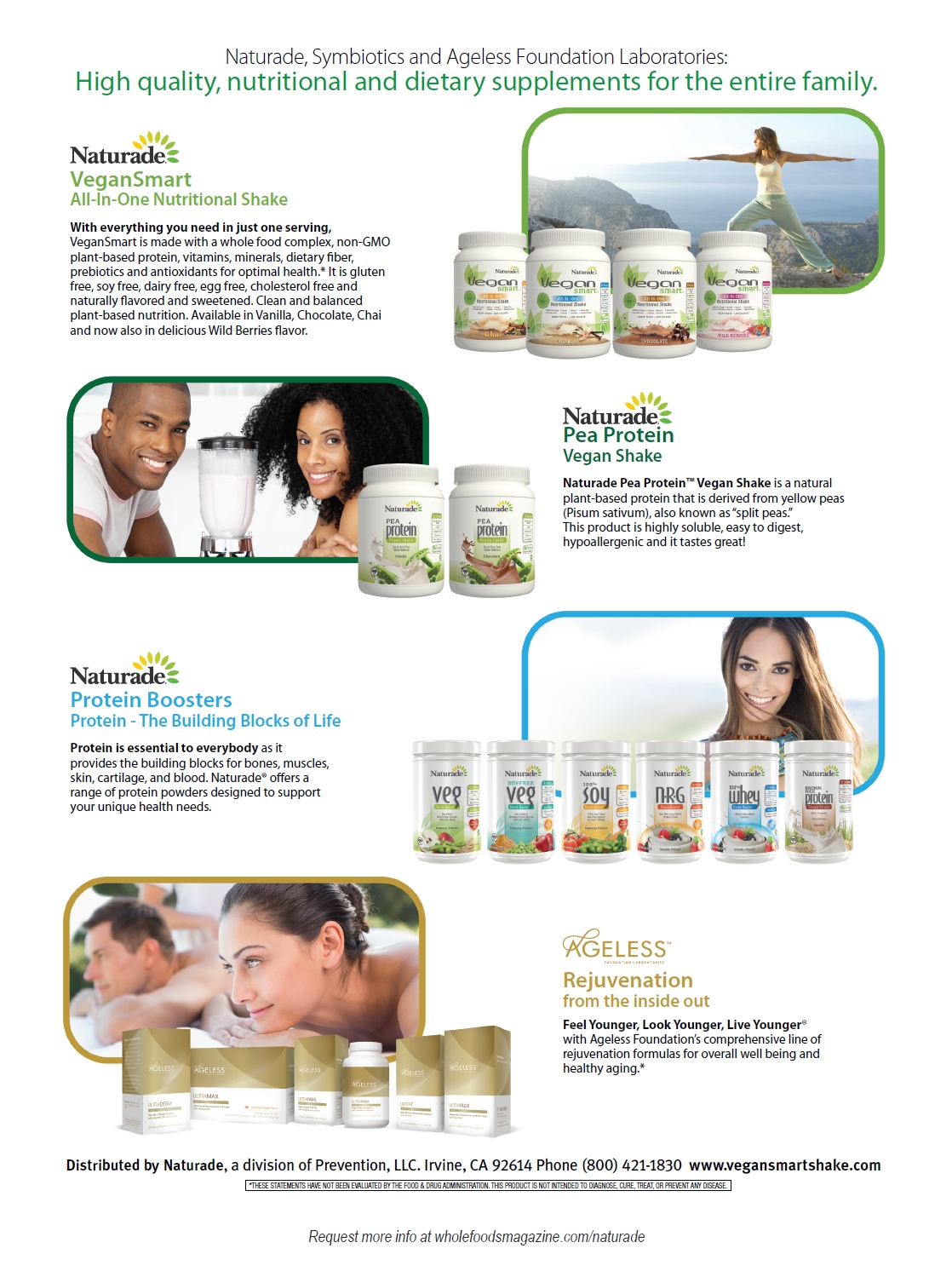 creatine is “a nitrogenous organic acid produced by the liver that helps supply energy to cells all over the body—particularly in muscle cells. It is made out of three amino acids: l-arginine, glycine and l-methionine” (8).
creatine is “a nitrogenous organic acid produced by the liver that helps supply energy to cells all over the body—particularly in muscle cells. It is made out of three amino acids: l-arginine, glycine and l-methionine” (8).
Richardson adds, “Creatine fuels ATP, the muscles’ energy currency. Research suggests that taking creatine can increase strength, endurance and help with lean muscle gains.”
Titlow also believes that “creatine is essential for any power athlete from powerlifter to sprinter.”
This seems like a product that would be beneficial to the human body, but there are still those that say that taking the supplement may have some side effects, such as stomach pain, nausea and muscle cramping (8). According to Richardson, “You will retain some water from taking creatine,” this appears to be the most common side effect of the supplement.
In most people, these side effects may be avoidable. According to Clouatre, “Most of the safety concerns with the monohydrate form are minor and include caution in maintaining adequate hydration and awareness that muscle strength may increase faster than tendon, ligament and joint strength.”
While creatine is said to be safe, problems may arise, such as kidney damage, if the supplement is taken in high doses (9). Extremely high doses could also prevent the body from making its own creatine (9).
Clouatre recommends that those with liver and kidney issues should seek professional medical advice before starting any supplement. And, make sure shoppers know to stick with the recommended dosage on the package.
Some studies that have shown the benefits of creatine supplementation in non-athletes, though additional research is needed on the topic. One study of 20 people with heart failure found that “short-term creatine supplementation in addition to standard medication lead to an increase in body weight and an improvement of muscle strength” (9).
In a different double-blind study of people with chronic obstructive pulmonary disease (COPD), those who took creatine had “increased muscle mass, muscle strength and endurance and improved their health status compared to those who took a placebo” (9).
In athletes, “creatine supplementation during resistance training allows athletes to complete more repetitions per set of a given exercise and may allow them to ‘recover’ more rapidly between sets” (10).
So all in all, fitness experts believe that creatine can be helpful for healthy individuals, if it is taken in reasonable amounts (10).
Myth 6: It Does Not Matter When You Take an Endurance Supplement.
Where do customers get the energy needed to get through a workout? Teach shoppers about 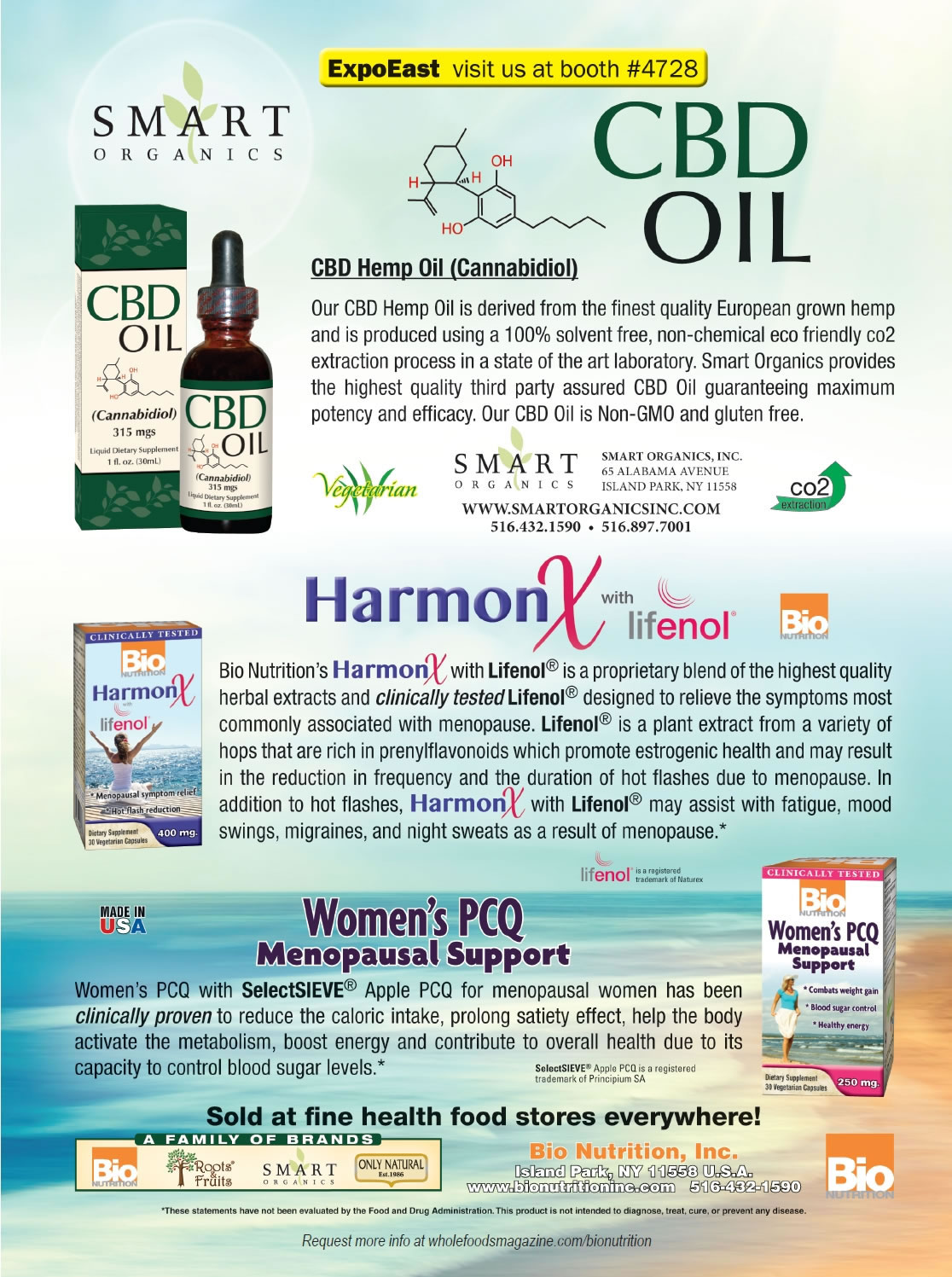 pre-workout supplements. These products “generally have some energy-promoting ingredients as well as ingredients that promote blood flow,” states Urban. “A product with a reasonable amount of caffeine and arginine-type ingredients will do well for pre-workout needs.”
pre-workout supplements. These products “generally have some energy-promoting ingredients as well as ingredients that promote blood flow,” states Urban. “A product with a reasonable amount of caffeine and arginine-type ingredients will do well for pre-workout needs.”
The ingredients in these supplements are “designed to increase energy during workouts and provide accessible calories to spare glycogen and thus extend time to failure,” states Clouatre, who also says that common ingredients to increase endurance are forms of l-arginine, l-citrulline, rhodiola, ginseng and astaxanthin.
Such ingredients, says Sugarek MacDonald, “will help ignite explosive energy and sharpen mental focus” in customers that take the supplements.
Justin Bingham, product development manager for Trace Minerals Research, Ogden, UT, lists several “essential nutrients the body needs to perform at its best.” The list includes: D-ribose, beta-alanine, electrolytes, B-vitamins, BCAAs, creatine and more.
For instance, research has shown that D-ribose supplementation aids with “diverse cardiovascular conditions, including ischemia, hibernation, hypertrophy and cardiomyopathy,” as well as increasing the rate of recovery after injury (11).
Emphasize how the products on your shelf are different than what shoppers will find in a drug store. Bingham says, “Most of the pre-workout supplements on the market are high in artificial stimulants, but low in the important nutrients that have been clinically proven to support muscle growth, stamina and endurance.”
Now, how does this differ from an intra-workout?
According to Clouatre, “During-workout supplements are now common.” He states that consuming glutamine, BCAAs, creatine and beta-alanine during your workout “works better in extending time to exhaustion, reducing muscle damage and improving post-exercise adaptation to the challenge of exercise overload,” he states.
Urban states that athletes should consume drinks containing some “amino acids, beta-alanine and D-ribose to help an individual get through rigorous exercise.”
In a 2012 research analysis of 15 different publications on beta-alanine, it was found that supplementation “elicits a significant ergogenic effect on high-intensity exercise, particularly in exercise capacity tests and measures, and where the exercise lasts between 1 and 4 minutes.” (12). Exercise lasting longer than four minutes was found to be affected in a positive way as well (12).
Additionally, Titlow says that if a person wants quick energy during their workout, they should select supplements with slow-burning carbohydrates. One example is a branded carbohydrate derived from sugar beet (Palatinose from BENEO, Inc, Morris Plains, NJ). This carb “offers a steadier source of energy when compared to sucrose,” says the company, because it cannot be broken down as fast as sucrose. “It therefore offers the full caloric value of carbohydrates (4 kcal/g) but in a balanced and longer lasting way,” the firm states.
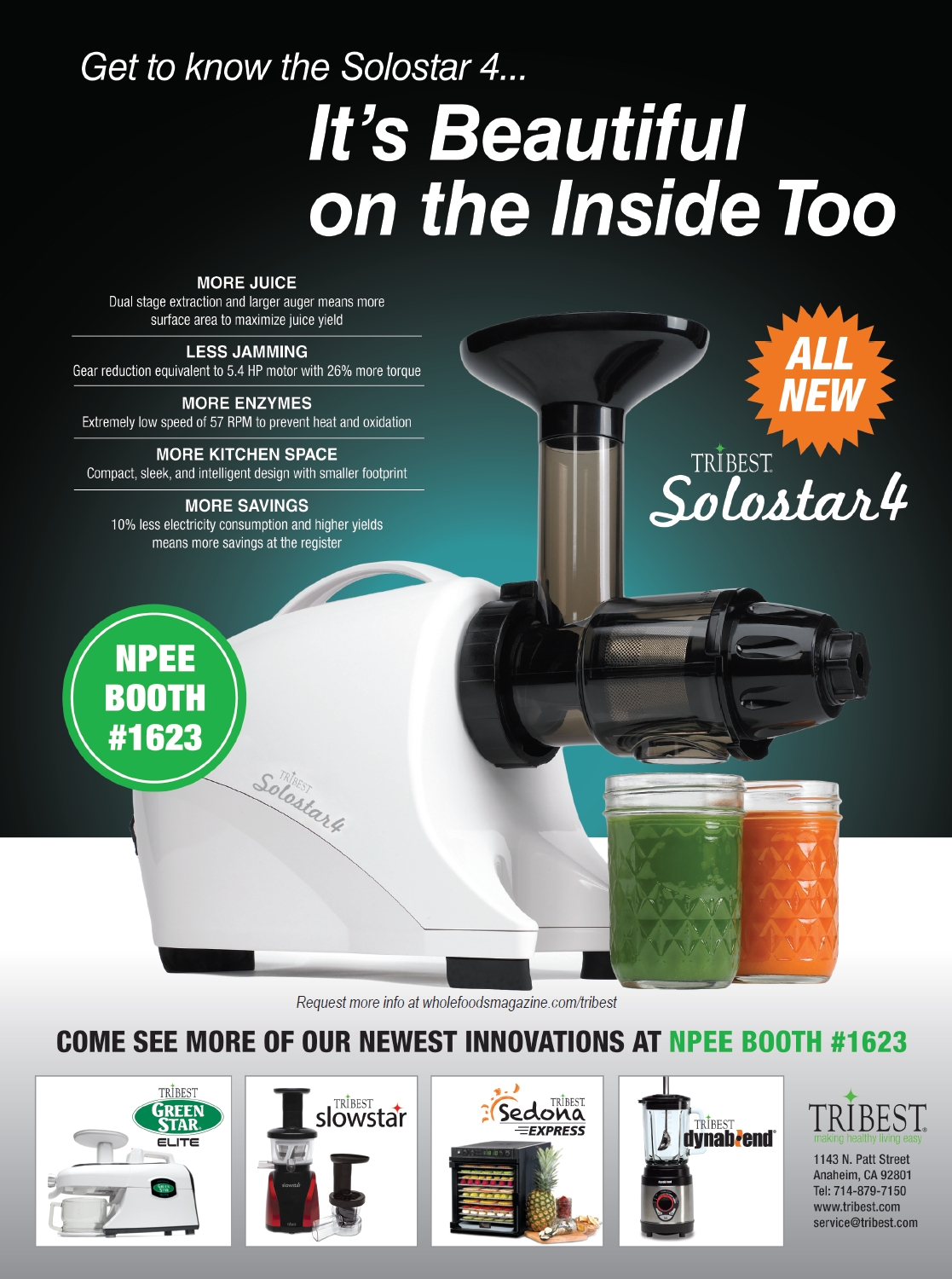 Then, customers and athletes need to consider what they put into their bodies after a workout. Sugarek MacDonald refers to the time period after the workout as a “window of opportunity.” She says, “This is because studies suggest that within 30 minutes after intense exercise, the body optimizes its ability to replenish energy stores—particularly muscle and liver glycogen.”
Then, customers and athletes need to consider what they put into their bodies after a workout. Sugarek MacDonald refers to the time period after the workout as a “window of opportunity.” She says, “This is because studies suggest that within 30 minutes after intense exercise, the body optimizes its ability to replenish energy stores—particularly muscle and liver glycogen.”
In this window, Marr suggests that athletes should “consume complex carbs and proteins like whole grain waffles or oatmeal with fruit.” He also says that taking astaxanthin is ideal for recovery in athletes, especially those that participate in endurance events.
A 2006 study of 33 tennis players that took either astaxanthin or a placebo found that after 12 weeks of supplementation, the astaxanthin group reportedly had less arm soreness and improved grip strength (13). Another study from 2001 tested to see if astaxanthin could prevent delayed onset muscular soreness (DOMS). The supplement (4 mg) was given to five out of nine participants for the three weeks before the workout session and the 12 days following. Two days after the workout, those that took the astaxanthin were said to have less DOMS than those that took the placebo (14).
Andrews cites one study that suggests athletes should replenish their bodies after a workout with a 4-to-1 carbohydrate-to-protein ratio to “accelerate muscle glycogen replenishment and stimulate protein synthesis” (15).
Bingham, again, suggests several nutrients that will help an athlete “feel energized after a workout rather than fatigued and drained of energy.” He suggests fueling the body with supplements such as taurine, BCAAs, l-glutamine, and electrolytes, among others.
For example, glutamine, as Bingham explains, is “important for quicker muscle recovery and supports the immune system.” One meta-analysis on the research of the supplement states that it may improve “stimulation of muscle glycogen synthesis; stimulation of muscle protein synthesis and muscle tissue growth; reduction in muscle soreness and improved muscle tissue repair; and enhanced buffering capacity and improved high intensity exercise performance” (16).
Another useful supplement for muscle recovery is tart cherry extract. In a randomized, double blind, placebo-controlled study, 54 healthy runners consumed 355 mL of tart cherry juice or a placebo twice a day for seven days prior to the study. After each participant ran an average of 26.3 km, the tart cherry juice group reported less post-exercise pain than the placebo group. This led to the conclusion that “ingesting tart cherry juice for 7 days prior to and during a strenuous running event can minimize post-run muscle pain” (17).
Mount also recommends collagen for a post-workout recovery. He says, with the strain applied to tissue during a workout, “Supplementation during the recovery period of training with collagen is essential to prevent injury,” such as torn ligaments or tendons.
Last, studies on a branded l-carnitine (Carnipure from Lonza, Inc., Allendale, NJ) suggest it reduces free radicals, resulting in less tissue damage and reduced muscle soreness after exercise. These effects were found after just three weeks. The firm’s website states, “Supplementation with Carnipure tartrate was found to induce an increase in muscle oxygen consumption, providing a potential mechanism for reduced hypoxic stress following resistance exercise.”
|
Select Sports Nutrition Supplements Interviewees were asked to share their top-selling sports nutrition supplements, and here’s what they had to say: Applied Food Sciences, Inc.: PurCaf Organic Caffeine Extract, JACA.g Chlorogenic Acids and Caffeine, GYUSA.g Guayusa Tea Extract, PurTea Organic Green Tea Extract, BTea Black Tea Theaflavin Extract, Calcium D-Glucarate, GCA Green Coffee Antioxidant, KAVA.g Kavalactone Extract. Axiom Foods, Inc.: Oryzatein, Veg-O-Tein P, Incatein, Cannatein. BENEO, Inc.: Palatinose. Bluebonnet Nutrition Corp.: Extreme Edge Whey Protein Isolate, Extreme Edge Post-Workout Formula, 100% Natural Dual Action Protein, Super Earth VeggieProtein, Extreme Edge Pre-Workout and Post-Workout. Compound Solutions, Inc.: TeaCrine, PeakO2, Carb10, InstAminos. Country Life Vitamins: BioChem 100% Whey Protein, BioChem 100% Vegan Protein. Glanbia Nutritionals Ingredient Technologies: AVONLAC Whey Protein Concentrates, BARFLEX Whey Proteins, BARGAIN Protein Blends, BEVWISE Protein Systems For Ready-To-Drink Beverages, BIOFERRIN Lactoferrin, PROVON Whey Protein Isolates, THERMAX Heat-Stable Whey Protein. Jarrow Formulas, Inc.: Creatine Monohydrate, L-Arginine, Acetyl-L-Carnitine, Acetyl-L-Carnitine Arginate, Astaxanthin, L-Citrulline, CoQ10, QH/Ubiquinol, Optimal Plant Protein, Whey Protein. Kyowa Hakko: Cognizin Citicoline, L-Citrulline, Sustamine L-Alanyl L-Glutamine. Lonza, Inc.: Carnipure. Naturade: VeganSmart All-In-One Nutrition Shake, Pea Protein, Brown Rice Protein, Symbiotics Sport Muscle Impact, Symbiotics Sport Amino Impact, Symbiotics Sport Protein Impact. NeoCell Corp.: Collagen Sports, Collagen Type-2 Joint Complex, Super Collagen Powder and Tablets, Flex Matrix Advanced Joint Hydrator. Nutrex Hawaii: BioAstin Natural Hawaiian Astaxanthin, Hawaiian Spirulina. Top Secret Nutrition: Cardio Igniter, Ab Igniter Black, Pump Igniter, BCAA Hyperblend, Pure L-Glutamine, Micronized Creatine, AstraVar 2.0 Amplifier, Natural-T Test Booster, Whey Protein, CLA 2500, Creavar Premium Creatine. Trace Minerals Research: Electrolyte Stamina Power Pak, Electrolyte Stamina Tablets, Endure Performance Electrolyte, Electrolyte Stamina Shot, TMRFIT Pre-Workout, TMRFIT Post-Workout, TMRFIT Liquid Zinc Magnesium Aspartate. Twinlab Corp.: CleanSeries Pre-Workout—Citrus, MCT Fuel, Ultra Fuel, 100% Whey Fuel, Amino Fuel and Amino Fuel Liquid, Glutamine Fuel Caps and Glutamine Fuel Powder, L-Carnitine Fuel 1100. |
Myth 7: Synthetic Caffeine Is the Best Choice.
Additionally, while not classified as a supplement in the sports nutrition field, there are several other “supplements” that are debated about, including caffeine and other stimulants. Sugarek MacDonald says, “It is ironic that even though bodybuilders and athletes treat their bodies like temples, sports nutrition brands continue to load their supplements with unhealthy ingredients (e.g., excess protein, excess stimulants, excess sugar, artificial flavors, sweeteners and colors, etc.).”
But, where would a product like caffeine fall in the supplement debate? There are some that believe natural caffeine sources help athletic performance, including Andrews, who says that for mental clarity and focus, products such as caffeine are beneficial, especially for athletes that are looking to consume additional antioxidants.
Zapp says that botanical caffeine sources give consumers more than just antioxidants, they also “contain polyphenols, catechins or even fiber and protein that aid in healthy energy.” Two examples are organic green tea extract for sustainable energy and green coffee extracts.
One website claims that caffeine is known “to help athletes train harder and longer. Caffeine stimulates the brain and contributes to clearer thinking and greater concentration” (19). But, Clouatre argues that it only improves athletic performance if it is used in large quantities, something normally done during competitions. And, this is likely not safe.
According to Rice University, while caffeine is one of the most widely used stimulants in the world and studies have shown that it can enhance performance in endurance sports, there appears to be no benefit in short-term, high-intensity exercise (20). This is because caffeine “mobilizes fat and encourages working muscles to use it as a fuel. This delays the depletion of muscle glycogen and allows for a prolongation of exercise” (20).
Powdered caffeine, intended to be mixed into drinks at home by shoppers, is something that many industry members don’t believe should be sold at all for safety reasons (21).
While this is a debate that will continue, Richardson acknowledges that millions of people will drink caffeine everyday. He recommends that “if you are going to use caffeine as a workout aid, just understand your limits and stay below them.”
As an alternative, Clouatre suggests people utilize specialized ginseng extracts, l-tyrosine, schisandra berry extract, ashwagandha extract and astaxanthin as healthy energy sources.
Another form of natural energy customers should be consuming is electrolytes. “If you’re perspiring and exercising for 20 or more minutes, then replenishment of electrolytes is important to avoid cramping and get the body back in balance after strenuous exercise,” says Stover.
According to Bingham, “Electrolytes are not only essential, they’re the foundation for performance and endurance.” He adds that they are necessary to keep cells hydrated and to transfer nutrients to the cells.
While all electrolyte drinks do not contain all five of the key electrolytes (sodium, potassium, calcium, magnesium and chloride), Andrews says, “Replenishing electrolytes during exercise is important to avoid cramps, swelling of hands and legs and dizziness.”
Regardless of your athletic expertise or competition level, Marr recommends athletes to consult with a sports nutritionist, trainer or coach to find an electrolyte supplement “tailored to individual needs.” WF
References
1. ABC News, “Schwarzenegger Has No Regrets About Steroid Use.” abcnews.go.com/ThisWeek/Health/story?id=532456. Feb. 25, 2005, accessed July 15, 2015.
2. KeepSupplementsClean.org, accessed July 27, 2015.
3. K. Matsumoto et al., “Branched-Chain Amino Acid Supplementation Attenuates Muscles Soreness, Muscle Damage And Inflammation During An Intensive Training Program,” J. Sports Med. Phys. Fitness, 49 (4), 424-431 (2009).
4. Medical News Today, “Whey Protein: Health Benefits and Side Effects.” www.medicalnewstoday.com/articles/263371.php, June 17, 2015, accessed July 16, 2015.
5. J.M. Joy et al., “The Effects Of 8 Weeks Of Whey Or Rice Protein Supplementation On Body Composition And Exercise Performance,” Nutr J. 12, 86 (2013)
6. B. Campbell et al., “International Society of Sports Nutrition Position Stand: Protein And Exercise,” J. Int. Soc. Sports Nutr. (2007).
7. T. B. Conley et al., “Effect of Food Form On Postprandial Plasma Amino Acid Concentrations In Older Adults,” Brit. J. Nutr. 106 (2), 203-207 (2011).
8. Medical News Today, “Creatine: Benefits and Health Risks.” www.medicalnewstoday.com/articles/263269.php, June 24, 2015, accessed July 21, 2015.
9. University of Maryland Medical Center, “Creatine,” umm.edu/health/medical/altmed/supplement/creatine, accessed July 21, 2015.
10. E. Rawson et al., “Scientifically Debatable: Is Creatine Worth its Weight?” Sports Science Exchange, 16 (4), 2003, accessed July 27, 2015.
11. D. F. Pauly et al., “D-Ribose as a Supplement for Cardiac Energy Matabolism.” Journal of Cardiovascular Pharmacology and Therapeutics, 5(4), 249-258 (2000).
12. R. M. Hobson et al., “Effects of Beta-Alanine Supplementation On Exercise Performance: A Meta-Analysis.” Amino Acids, 43 (1), 25-37 (2012).
13. G Spiller et al., “Effect of Daily Use of Natural Astaxanthin on C-Reactive Protein.” Health Research and Studies Center, Los Altos, CA. Access at www.astaxanthin.org.
14. A. C. Fry, “Astaxanthin Clinical Trial for Delayed Onset Muscular Soreness.” Report I, Memphis, Tenn.: University of Memphis, Exercise Biochemistry Laboratory (2001).
15. C. Kerksick et al., “International Society of Sports Nutrition Position Stand: Nutrient Timing,” J. Int. Soc. Sports Nutr. 5 (17), 2008.
16. M. Gleeson, “Dosing and Efficacy Of Glutamine Supplementation In Human Exercise And Sport Training.” J. Nutr. 138 (10), 2045S–2049S (2008).
17. K. S. Kuehl et al., “Efficacy of Tart Cherry Juice In Reducing Muscle Pain During Running: A Randomized Controlled Trial,” J. Int. Soc. Sports Nutr. 7 (17), (2010).
18. Lonza Nutrition, www.lonza.com/products-services/consumer-care/nutrition/human-nutrition/health-ingredients/carnipure.aspx, accessed July 29, 2015.
19. Active, “The Facts About Caffeine And Athletic Performance,” www.active.com/articles/the-facts-about-caffeine-and-athletic-performance, accessed July 15, 2015.
20. Rice University, “Caffeine and the Athlete,” www.rice.edu/~jenky/sports/caffeine.html, accessed July 15, 2015.
21. Council for Responsible Nutrition, “Caffeine,” http://crnusa.org/caffeine, accessed July 27, 2015.
22. S.M. Phillips, "Protein requirements and supplementation in strenght sports." Nutrition 20 (7-7), 689-695 (2004).
23. D. K. Layman, "Dietary Guidelines should reflect new understandings about adult protein needs." Nutr and Metab 6 (12), (2009).
Published in WholeFoods Magazine, September 2015


